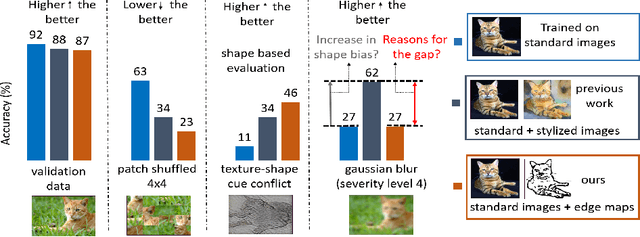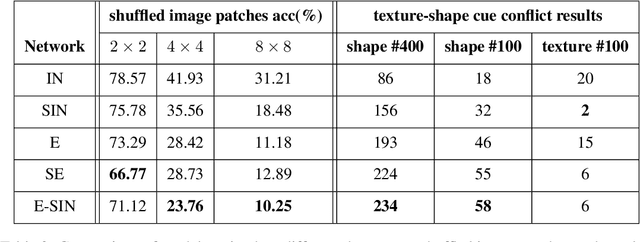Julien Vitay
INRIA Lorraine - LORIA
Multivariate Time Series Classification: A Deep Learning Approach
Jul 05, 2023



Abstract:This paper investigates different methods and various neural network architectures applicable in the time series classification domain. The data is obtained from a fleet of gas sensors that measure and track quantities such as oxygen and sound. With the help of this data, we can detect events such as occupancy in a specific environment. At first, we analyze the time series data to understand the effect of different parameters, such as the sequence length, when training our models. These models employ Fully Convolutional Networks (FCN) and Long Short-Term Memory (LSTM) for supervised learning and Recurrent Autoencoders for semisupervised learning. Throughout this study, we spot the differences between these methods based on metrics such as precision and recall identifying which technique best suits this problem.
Does enhanced shape bias improve neural network robustness to common corruptions?
Apr 20, 2021



Abstract:Convolutional neural networks (CNNs) learn to extract representations of complex features, such as object shapes and textures to solve image recognition tasks. Recent work indicates that CNNs trained on ImageNet are biased towards features that encode textures and that these alone are sufficient to generalize to unseen test data from the same distribution as the training data but often fail to generalize to out-of-distribution data. It has been shown that augmenting the training data with different image styles decreases this texture bias in favor of increased shape bias while at the same time improving robustness to common corruptions, such as noise and blur. Commonly, this is interpreted as shape bias increasing corruption robustness. However, this relationship is only hypothesized. We perform a systematic study of different ways of composing inputs based on natural images, explicit edge information, and stylization. While stylization is essential for achieving high corruption robustness, we do not find a clear correlation between shape bias and robustness. We conclude that the data augmentation caused by style-variation accounts for the improved corruption robustness and increased shape bias is only a byproduct.
A Computational Model of Spatial Memory Anticipation during Visual Search
Oct 09, 2006



Abstract:Some visual search tasks require to memorize the location of stimuli that have been previously scanned. Considerations about the eye movements raise the question of how we are able to maintain a coherent memory, despite the frequent drastically changes in the perception. In this article, we present a computational model that is able to anticipate the consequences of the eye movements on the visual perception in order to update a spatial memory
 Add to Chrome
Add to Chrome Add to Firefox
Add to Firefox Add to Edge
Add to Edge